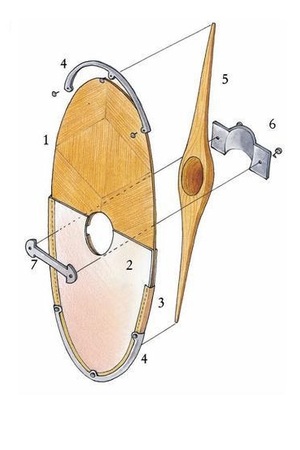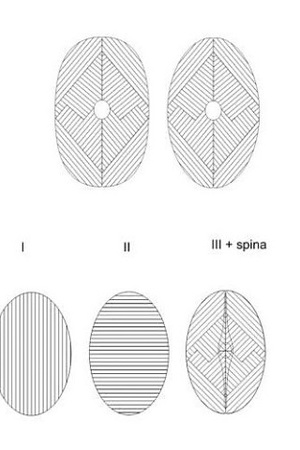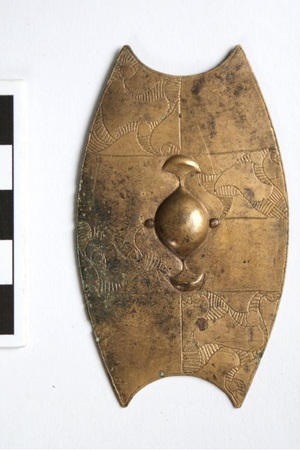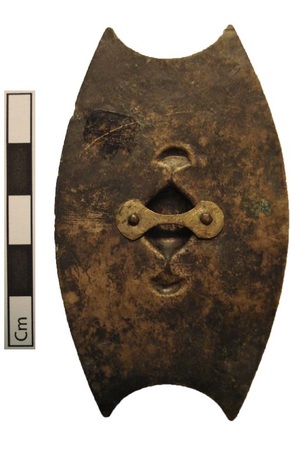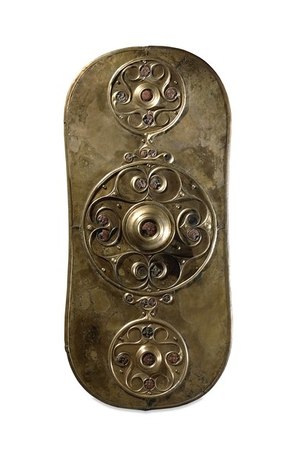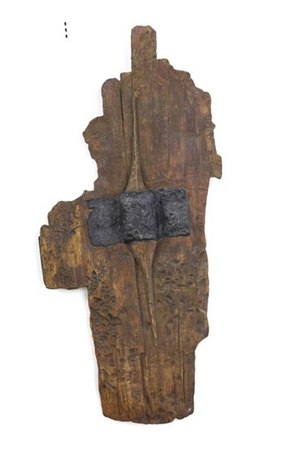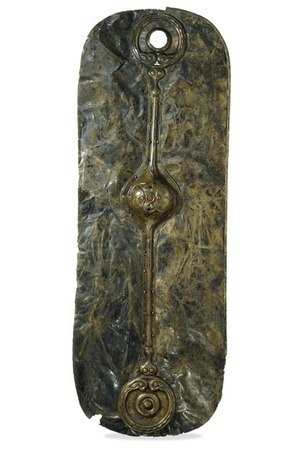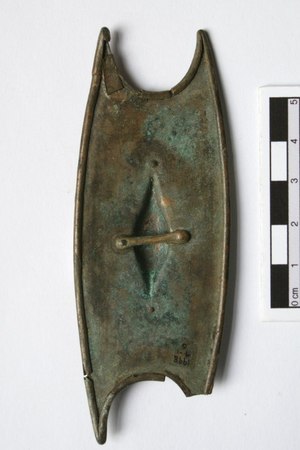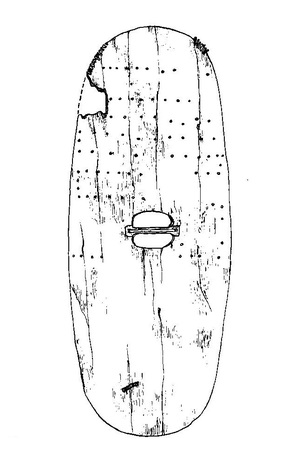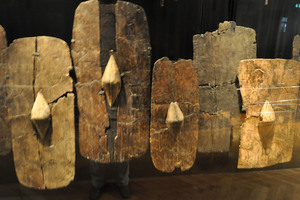Celtic shields
Like many other ancient warriors, the Celts used shields as a primary means of defense. Both spearmen and swordsmen utilized them. Celtic shields varied in shape, size, and manufacturing techniques.
They were made of a set of wooden planks or bronze. They had a metal boss of various shapes (sometimes more than one). The grip was typical for ancient times, using a fist grip. To enhance durability, the shields were edged with metal along the edges.
Archaeological finds
There is a vast number of Celtic shield findings, including archaeological discoveries of the shields themselves and depictions on reliefs, vases, and figurines. Interestingly, these depictions were made not only by the Celts themselves but also by their adversaries.
Three La Tène examples, unfortunately now fragmented, were made of oak. They were approximately 1.2 cm thick at the center and slightly tapered towards the edges. Two of them had an Italian-style vertical ridge, while the third did not preserve it. The boss was convex, allowing the hand to grip it freely. The handle was made of a separate piece of wood, usually reinforced with an iron strip and attached to the shield from the inside. Across the convexity, a rectangular iron plate was affixed, providing additional hand protection.
Shields of this type were also found in Denmark and Ireland. They were covered with hides, and there is no reason to doubt that La Tène shields were also covered with hide, possibly felted wool as well since bare wood would splinter from slashing blows. Similar uncovered wooden shields have been found in ship burials in Norway. This raises the question: were they made specifically for funerals and other ceremonies, similar to the practices in archaic Greece and Italy? In any case, an uncovered wooden shield would be useless in battle. The victorious frieze from Pergamon depicts Celtic shields with what appears to be a leather covering, which could have been present on both sides and reinforced along the edges. In the example from Cloneenagh Townland, Tipperary, Ireland, the shield's edge is entirely made of leather and stitched through the shield. Metal edging has also been found. A La Tène shield with a hide covering could weigh approximately 6-7 kg (wood around 4 kg, hide about 2 kg, and the metal boss around 250 g). The ancients undoubtedly knew that oak could be strengthened by charring and, of course, subjected shields to thermal treatment.
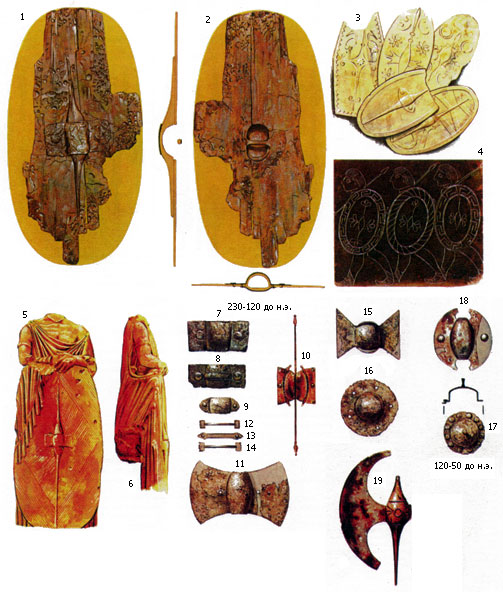 1, 2 — one of the wooden shields recovered from the lake at La Teng. Neuchatel Museum, Switzerland. 1 — the outer part of the oak shield, which shows a vertical rib and an umbon in the form of an iron strip. 3rd century BC
1, 2 — one of the wooden shields recovered from the lake at La Teng. Neuchatel Museum, Switzerland. 1 — the outer part of the oak shield, which shows a vertical rib and an umbon in the form of an iron strip. 3rd century BC
The origin of this type of shield remains uncertain. The resemblance between the Roman scutum and the Celtic shield is so significant that they must have had common roots. The Celtic shield first appears in Gallo-Celtic depictions around 400 BCE, while the scutum became known 300 years earlier. In such a case, the only possible conclusion is that the Celts adopted the Italian shield form when they invaded Italy in the 5th century BCE. They then began using it on the other side of the Alps. Furthermore, Gallo-Celtic scabbards may have been exported from the Celts in northern Italy. It is impossible to agree with the assertion that the Celts were unfamiliar with the shield until their arrival in Italy, as Celtic tactics necessitated its use.
By examining the series of bosses depicted above, their evolution can be traced from simple strips in the 3rd century BCE to intricately crafted butterfly-shaped bosses in the 1st century CE found in Britain. Although all but one were discovered in continental Europe, corresponding British examples are almost always found.
The majority of Celtic shields had an oval shape, although rectangular, hexagonal, and circular examples appear in depictions and archaeological finds. These depictions indicate that shields were adorned with various symbols, animal motifs, or geometric ornamentation. Diodorus claims that these decorations were made of bronze, but they were most likely painted. It is possible that the historian referred to the elaborate bronze shields of the type found in Britain; however, they were clearly used only for ceremonies and not for actual combat.
Related topics
Literature
- Connolly P. Greece and Rome. Encyclopedia of Military History. Eksmo-Press. Moscow, 2000. Translated by S. Lopukhova and A. Khromova.
- Mongayt A. L. Archeology of Western Europe: The Bronze and Iron Ages, Moscow: Nauka Publ., 1974.

 Gallery
Gallery






